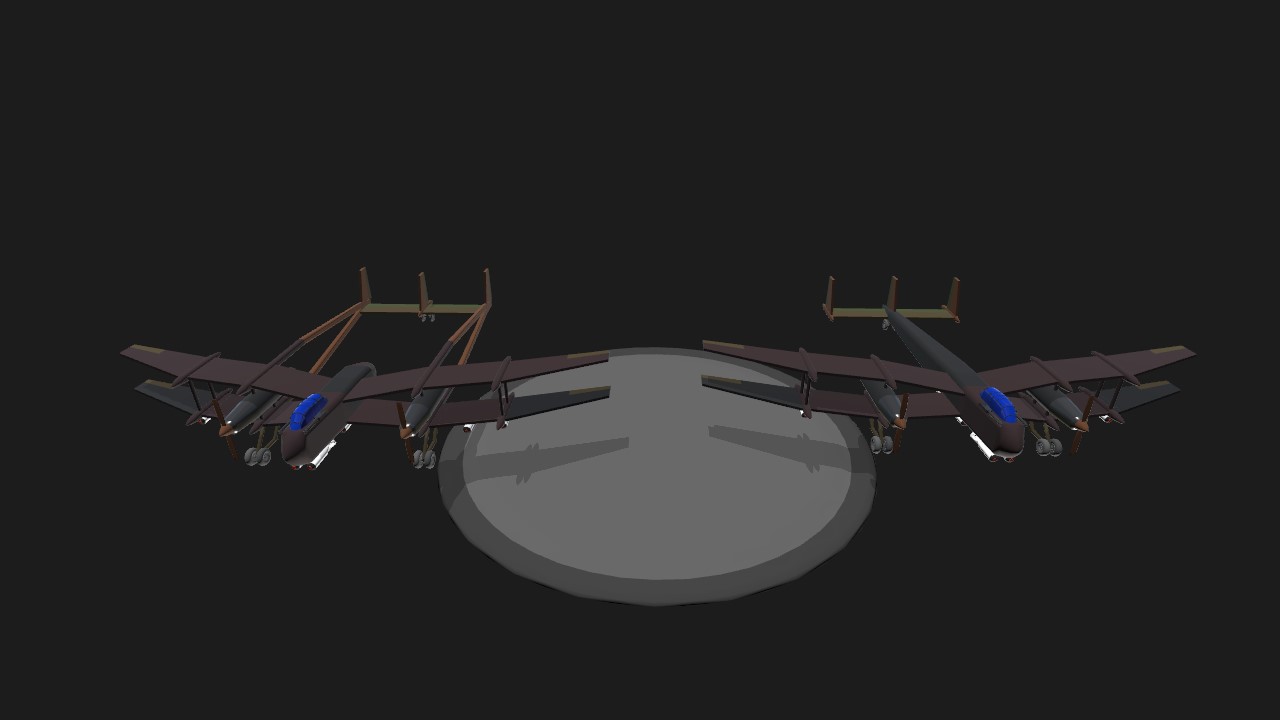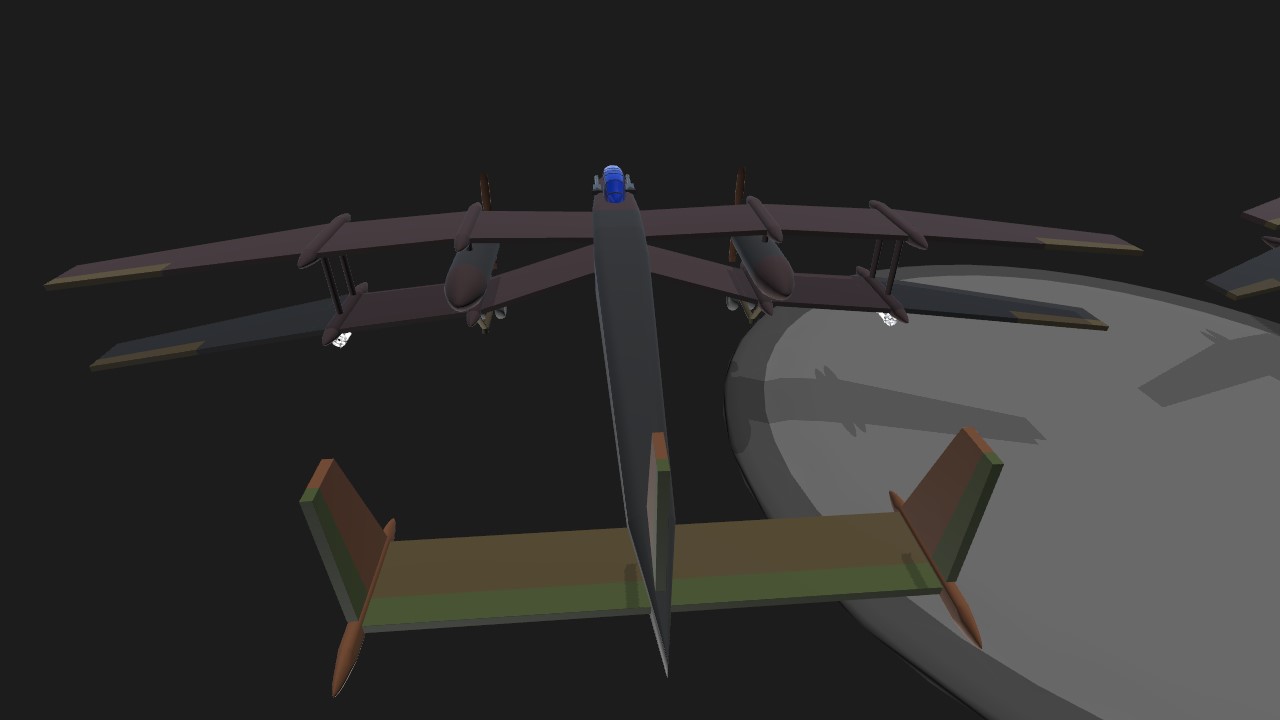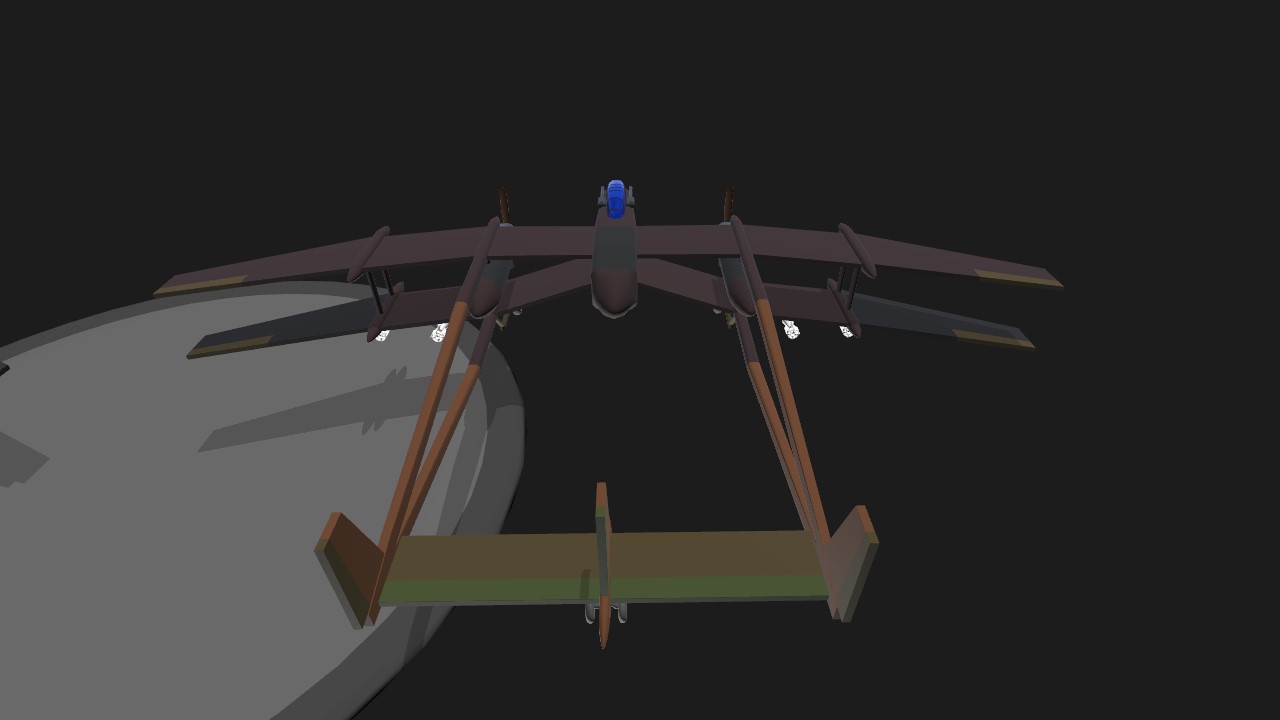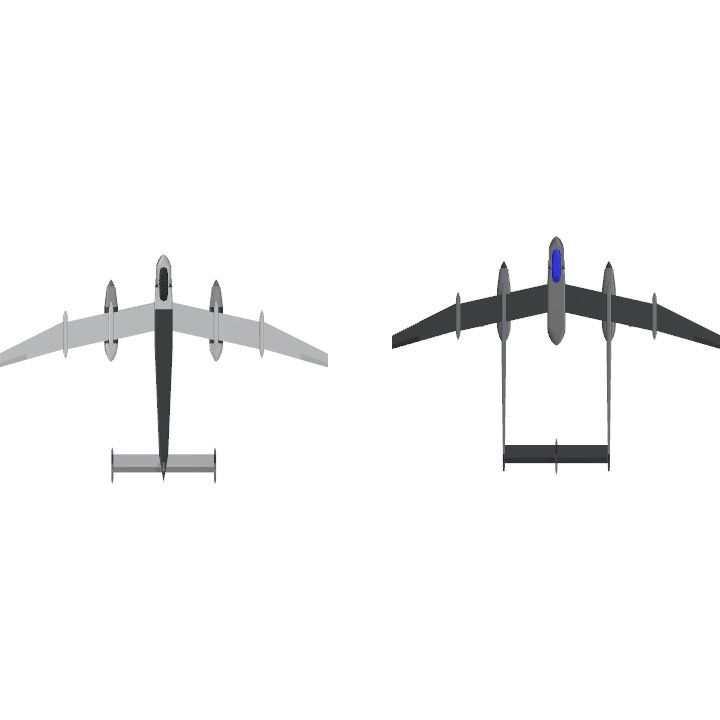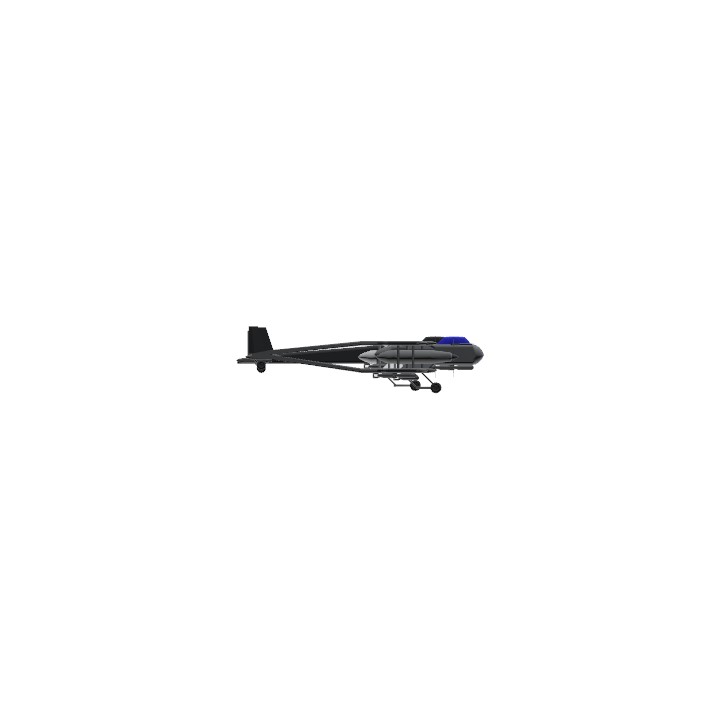One of the first things that were clear to the CIR's initial struggle was that the Clothes Horse was an acceptable aircraft for basic purposes, but not a stellar one, owning to it'l low payload and average speed. Owning to it's modular construction, however, it became clear that a potential stopgap was to tinker with the basic airframe. Among the more conventional results is this twin-engined variant. While originally inheriting the original's tail arrangement, later versions (known as Bs) would further refine the concept by replacing it with a single empennage.
This bomber's most famous contribution consists of it's debut in the pivotal Battle of the Ebro, which was the first major Nova Evropan defeat in the Iberian Peninsula, and which marked the turning point of the war. In the type's most famous action in this battle, 3 sorties of 8 bombers each were responsible for the destruction on the ground of over half of the 20 Bashers available to the Nova Evropan force and inflicting heavy casualties on their troops in a surprise attack made possible by guerrilla collaboration and the surprise factor: the helicopters were placed beyond Clothes Horse range, until then the only CIR aircraft known to Nova Evropa, and as such they were arranged expecting guerrilla action instead of air attack.
Aware of the suicidal chances of attacking this position, these insurgents instead communicated the position of the helicopter staging ground to the Confederal troops in the region, leading to a surprise air attack by this model previously unknown to Nova Evropan forces. This important operation however was not without loss, as three bombers were shot down by ground fire, a fourth crashed while landing and two more were written off and cannibalized.
Throughout the rest of the battle, the Twin Clothes Horses carried out reconaissance missions and also focused on bombing logistics depots behind enemy lines while their single-engined counterparts handled reconaissance flights on the frontline itself, rarely venturing beyond enemy lines but serving to supply troops on the ground with vital information.
While at this stage, Nova Evropa had no real match to this aircraft performance-wise and as a result, most combat losses are due to ground fire, the latter development of dedicated fighter autogyros put this aircraft's rampage to rest.
Specifications
General Characteristics
- Created On Windows
- Wingspan 129.3ft (39.4m)
- Length 44.5ft (13.6m)
- Height 11.9ft (3.6m)
- Empty Weight 2,687lbs (1,218kg)
- Loaded Weight 4,302lbs (1,951kg)
Performance
- Horse Power/Weight Ratio 0.116
- Wing Loading 7.7lbs/ft2 (37.6kg/m2)
- Wing Area 558.6ft2 (51.9m2)
- Drag Points 7387
Parts
- Number of Parts 133
- Control Surfaces 9
- Performance Cost 1,280

